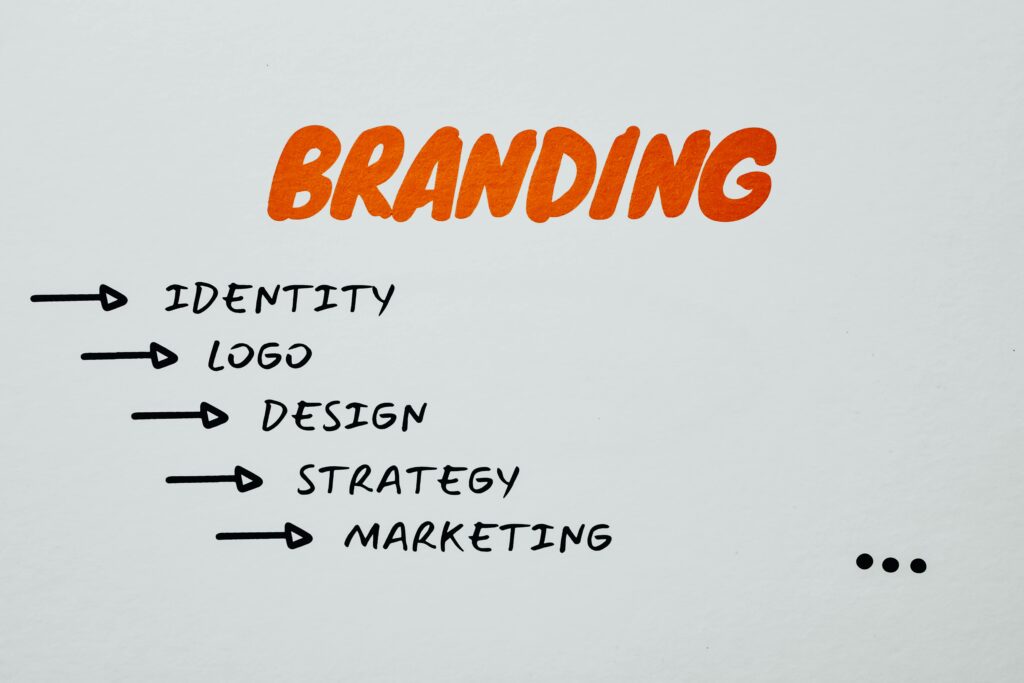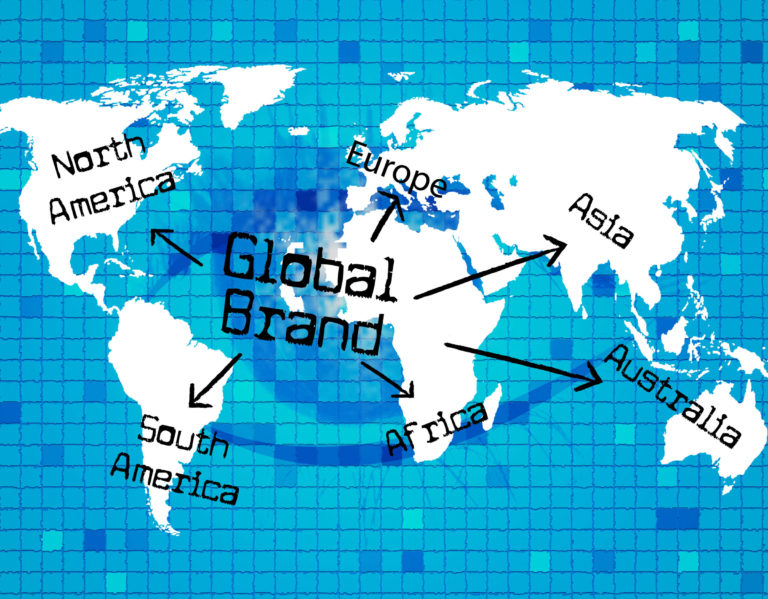Brand Development Explained: What It Is and Why Your Business Needs It

If you’re working with a reputable marketing agency, they have a process in place to help you work through how to brand a new company or how to overhaul the look and feel of your established business. Once you’re done working through the steps, you end up with a fully fleshed-out brand that’s ready to launch, accurately present your product to the market, appeal to your target audience, and take the world by storm. That is, of course, the ultimate goal of any brand marketing.
Brand development is a little different, because rather than describing a goal that is reached by going down a marketing checklist that results in a specific outcome, there’s no destination to reach. What you’re probably thinking of as brand development—creating a logo, choosing colors that best represent your company persona, considering the tone and voice used to communicate with your target audience—certainly contribute to your overall brand. But when it comes to the true process of brand development, those pieces aren’t the end of the story.
If brand development isn’t your brand identity, your brand strategy, your brand management, or even your brand positioning, what is it? It’s actually the ongoing exercise of establishing and updating the goals, purpose, characteristics, and perception of your company. Creating your branding assets, establishing a brand identity, developing a brand strategy, and managing your brand and messaging are all important contributors to brand development.
Just as you have to nurture personal relationships or they die, you have to nurture your relationship with your customers. That is why brand development is integral to a long-term successful marketing strategy.
Why is Brand Development Important?
Your brand development should never be considered complete because it helps you define your identity as a company—which has to always be evolving. A willingness to change allows you to connect with your target audience, track the way you present to that audience, and ensure your product stands out from the crowd. None of which you want to allow to grow stale, boring, or expected. Here’s why brand development is important.
1. Creates trust & credibility
Today, when it comes to trust and credibility, customers are holding companies to a higher standard than ever before. Commitment to customer service, responsiveness to feedback, and honesty in communications are universal to every business, regardless of what you sell. The continuous nature of brand development provides the opportunity to check in with your marketing and branding to make sure every asset representing your company is adhering to that commitment.
2. Improves your overall marketing
Each part of your branding and marketing should be informed by your brand development. Diligently monitoring every aspect of your branding means consistency across all marketing assets. Presenting a cohesive look and feel for your company not only contributes to trust and credibility but also improves brand recognition and loyalty. When what you use to entice customers to buy is out of fashion and out-of-date, or worse yet, a patchwork collection of old and new marketing tactics, it reflects poorly on your brand and your product. Putting your brand development into permanent maintenance mode ensures the advertising you show the world is always on point.
3. Maintains market awareness
You need to know how and where to target your ideal customers. You probably put a lot of thought and consideration into this when you first set out on your business journey. Perhaps your target customer was what inspired you to start your business in the first place. But the world never stops changing, and neither can your business. Brand development supports the constant evolution you need to keep up by reminding you to check in regularly with how and why your target audience may be varying from your current profiles. Depending on your product, your audience may be replaced by the next generation who have different expectations. At the same time, don’t forget to consider that your target audience may simply be growing up. While they may still want to use your product or service, the reason behind their decision may be different.
4. Establishes brand differentiation
Why should customers choose your product or service over your competition? If your customers are unclear about what sets you apart, they’re less likely to choose your product. Brand development helps you determine what separates you from the rest of the market. And the ongoing nature of brand development allows you to be responsive to changes in the marketing strategy of those competitors.
There are certainly many more reasons why brand development is important, but not monitoring trust and credibility, the effectiveness of your marketing, and your brand differentiation can have devastating consequences. Consistently returning to the brand development process ensures your company evolves and reflects the values of the current time.
What Contributes to Brand Development?
The directive of brand development is to push you to not become complacent, convincing yourself that the same old approach will keep working year to year. Successful brand development starts with your constant attention to understanding—understanding how your customers, your competition, and your messaging change over time.
1. Knowing your customers
Very often companies working on creating a marketing strategy are told to define their target audience or create buyer personas. That is a great first step to knowing your customers. Both of those exercises can be valuable and contribute to a greater understanding of who you want to sell to. But neither conveys the whole picture. Knowing how to shape your marketing to appeal to your audience is really about listening.
Rather than deciding who wants your product and why they should buy it, stop and listen to your current customers—whether that is through conversations, surveys, or even reading customer reviews. Take advantage of any and all available data, determine why customers choose your product or service over your competitors, and understand their motivation. From there, you can create buyer personas that are based on the reality of who your customers are, what motivates their choices, and when they take action to determine the right marketing strategy.
2. Knowing your competition
As we said above, knowing your competition is how you establish brand differentiation. For your brand to stand out, you have to fully explore who you’re up against. First, you need to know what companies are legitimate competitors for your product or service. Not everyone who sells the same product and service is automatically a challenger to your market share.
Once you know which companies you’re competing with, you need broad market research to gather insight into what they sell and how they sell it. This includes their content strategy and social media presence. Also, pay attention to their offers, pricing, sale cycles, and discount structure. Completing SWOT (Strengths, Weaknesses, Opportunities, and Threats) analyses—both for your company and for your competition—can be incredibly valuable.
3. Knowing your messaging
How you’re communicating with your target audience is almost as important as what you’re communicating. Like trust and credibility, brand messaging contributes to almost every aspect of your marketing strategy. To be clear, brand development isn’t about changing the foundation of your business. The purpose is actually to protect that foundation. Presenting your company personality, values, and unique selling point won’t lead to customer loyalty, or even target audience growth, if they aren’t communicated in a way people understand and connect with.
Strong, accurate messaging also builds brand recognition and shapes the way your product is perceived. Revisiting your messaging frequently ensures you maintain your intended product positioning.
Committing to the Process
When you’re already dealing with staffing, supply chain, and budget issues, the need for an iterative brand development process can seem overwhelming. The data collection, which must be current and accurate in order to support valid decision-making, requires know-how to gather and time investment to analyze. You need to fully understand the preferences and behaviors behind the purchasing habits of your target audience.
Just like your audience, marketing strategies and content formats are never static. Advancements in technology, shifts in cultural expectations, and variations in the economy all contribute to an ever-changing marketplace. Understanding and keeping up with those changes requires an awareness of the latest marketing trends.
Your competitors won’t stick with the status quo, either. If they’re pursuing the brand development process as they should, they won’t just be modifying their strategy based on changes to the market. They’ll also be observing your marketing and making changes to their strategy accordingly.
Without the capacity to absorb this knowledge, you can’t know how to adjust your messaging, stay ahead of competitors, or capture new customers. But keeping up, and deciding which of the latest trends are worth following, which are simply a fad, and when to change direction, can be exhausting. A knowledgeable marketing strategy company will help you find and maintain your market share. Talk with one of our marketing experts today!







